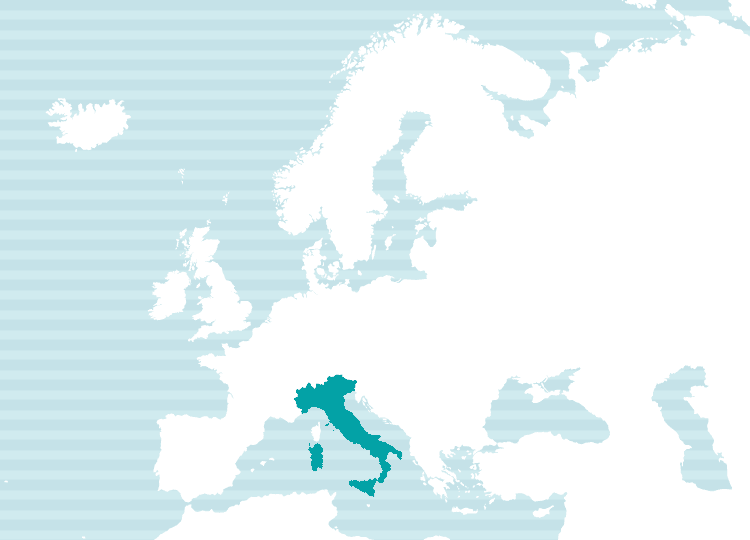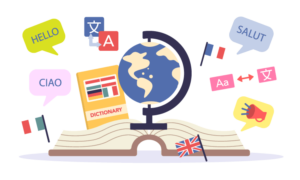Italy: A Land of Agriculture, Industry, and Art
Famous for pasta, tomatoes, and olives, Italy stands as one of Europe’s leading agricultural nations. But it’s also renowned for its industrial output—especially automobiles and motorcycles. As a country of artisans and artists, Italy has a rich heritage in fashion, jewelry, and furniture design. International trade fairs and exhibitions held in cities like Milan attract global attention, with many Japanese companies actively participating.
Italian Translation Services: Meeting Diverse Market Needs
There is growing demand for Italian translation in a wide range of fields: food-related content, catalogs and manuals for industrial products, exhibition panels and brochures, and social media content. Additional needs include business emails and contracts with Italian brands and retailers, translations of manga and anime-related content, and survey questionnaires.
NAIway Translation Service offers high-quality Italian translation tailored to your needs.
Our team includes experienced translators with deep expertise in business, law, engineering, tourism, fashion, sports, and more—ensuring precise, culturally appropriate translations across a wide range of specialized domains.

For more details, please feel free to contact us.
Italian Translation Rates (Japanese-Italian & Italian-Japanese)
Below are NAIway’s standard translation rates.
Our regular translation fees cover all of the following services, so you can rely on us with confidence.
Translation
+
Native-Level Quality Check
+
After-Support※
※ As part of our after-support, we handle revisions and inquiries within the post-delivery verification period (typically one week).
(Please note that changes or additions to the original document are not included.)
Japanese to Italian Translation

From 27.5 JPY per character
Italian to Japanese Translation

From 30.8 JPY per word
- The actual cost will be estimated based on the content and volume of the document. Please send us the document when requesting a quote.
- Minimum Charge Policy. Depending on the character/word count and other conditions, we have a two-tier minimum charge system of 5,500 Japanese Yen or 11,000 Japanese Yen (tax included). This ensures coverage of the essential costs involved in translation coordination and quality assurance.

For more details, please feel free to contact us.
NAIway's Quality Assurance System
At NAIway Translation Service, we believe that quality management is our top priority as a professional translation company. To ensure the highest standards, we have developed our own Quality Assurance System (QAS) and implement strict quality control measures.
For high-quality Japanese-Italian and Italian-Japanese translations, every document undergoes a two-step review process: after the initial translation, a second translator conducts a thorough quality check.
We meticulously review each character and sentence, ensuring logical flow, terminology consistency, and appropriate expressions to deliver a refined translation tailored to your needs.

Multilingual Translation Support
At NAIway, we offer multilingual translation services. Along with Italian, we provide translations in English, German, Portuguese, Spanish, and more—all in one place.
If you're considering inbound tourism solutions, feel free to contact us for a consultation!

Introduction to Our Italian Translators
Here are some of the translators currently working with or registered at NAIway.
For more details, please feel free to contact us.
What is the Italian language?
The Italian Language: A Living Legacy of Latin
Italian is the official language of the Republic of Italy and the Republic of San Marino, and is also commonly used in Vatican City.
It belongs to the Italic branch of the Indo-European language family and shares its roots in Vulgar Latin with other Romance languages such as Spanish, Portuguese, and French.
Among the Romance languages, Italian has remained remarkably consistent in form since its emergence in the 13th century. It retains a strong connection to Latin, both in structure and vocabulary, making it one of the closest modern reflections of the ancient language.
Italian Script
he Italian language is written using the 26-letter Latin alphabet, supplemented by characters with diacritical marks—such as the acute (´), circumflex (^), grave (`), tilde (˜), and the cedilla (Ç).
How to Say “Hello” in Italian
イタリア語の「こんにちは」
Buon giorno/ˌbwɔn ˈdʒorno/
Primary Regions of Use

Language Family: Indo-European > Italic > Romance Languages
Regions Spoken: Italy, San Marino, Switzerland, Vatican City, and more
Italian Language Highlight
Italian Nouns and Pronunciation: Simplicity with a Twist
In Italian, nouns that end in -o are generally masculine, while those ending in -a are typically feminine.
Nouns ending in -e, however, can be either masculine or feminine—so caution is needed with those.
As for pronunciation, Italian is one of the more approachable languages for Japanese speakers, as it mostly follows phonetic spelling similar to the Roman alphabet. Like in French, the letter “H” is silent in Italian.
For example, the Japanese automaker HONDA is pronounced “Onda” in Italian.
The letter “C” has multiple pronunciations depending on the vowel that follows:
- Ca, Cu, Co are pronounced ka, ku, ko
- Ce, Ci are pronounced che, chi
- Chi sounds like “ki”, and Che like “ke”
So, the Tokyo district Chiyoda may be mistakenly pronounced as Kiyoda in Italian!
Italian Dialects
A Tapestry of Dialects: The Linguistic Diversity of Italy
Italy is home to a rich variety of regional dialects, broadly categorized into Northern and Central–Southern groups.
Notable dialects include Gallo-Italic in the north, Tuscan in the central region, and Neapolitan, Sicilian, and Corsican in the south.
While Italians speak Standard Italian, especially in formal and national contexts, many continue to use their regional dialects in daily life—keeping local linguistic traditions very much alive.
Italian in the Japanese Context
Italian Words That Found a Home in Japanese
Many Italian loanwords have made their way into the Japanese language, especially in the worlds of music and cuisine.
These words often retain their elegant or expressive character, reflecting Italy’s cultural influence.
Examples include:
Tempo, concerto, sonata, crescendo, staccato, soprano, quartet, trio, solo, opera, dolce, zero, paparazzi, mafia, motto, biennale, grande, gelato, and pasta.


